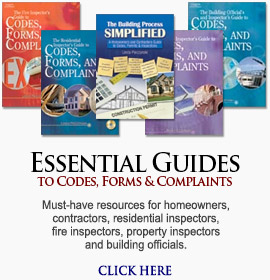Is your city included in this list: http://www.huffingtonpost.com/2011/03/30/foreclosures-ghost-towns_n_840663.html#s259246&title=Cleveland_Ohio ? It shows us that the crisis is not behind us yet and we’re going to continue to have problems for a long time. If you have a similar situation, let me know how you’re coping with it.
I was recently contacted by someone who is gathering data on the housing market with a special interest in the health of condominium associations. He was concerned that many of them, especially those that are recent conversions, are struggling financially as more and more units are subject to foreclosure. This raises problems for inspectors. If an association falls apart. who is responsible for common area problems? I’ve had this situation happen a number of times, especially with fire code problems and building code violations. The first question that needs to be answered is how is title held regarding the common area in a condominium development? In some developments the title is held by the condo association but in others, each unit owner owns an undivided share of the common area. After that question is answered, the next one is: what does the declaration of condominium say about who or what is responsible for the upkeep and repair of the common area? Typically the association is responsible. If the association owns the common area and is responsible for its upkeep, the answer is easy. I tell the inspector to notify and cite the association if necessary. I’ve known some jurisdictions that have even helped associations get reinstated that had lapsed. However, if the common area is owned by the individual unit owners, it gets trickier. If the association is responsible for the upkeep under the declaration, then it is in control of the property and is considered an “owner” under the IPMC. However, if the association doesn’t exist, who does the inspector pursue? In that case, all of the owners are responsible and should be notified and cited if necessary. This can be a huge undertaking in a large condo complex. Sometimes following this procedure stirs up the unit owners enough to form a working condo association. It’s far easier dealing with one entity than multiple owners and the local jurisdiction should encourage the owners to follow the condominium declaration and form a viable association.

